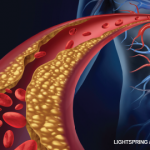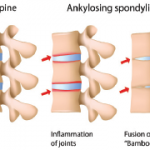In the end, when determining the role of NSAIDs, physicians have to consider several factors—the symptomatic state of the patient, the likelihood of radiographic progression, the risks of continuous NSAID treatment to the patient, and the treatment alternatives, Dr. Haroon said.
How Many TNF Inhibitors to Try?
Elisabeth Lie, MD, PhD, of the rheumatology department at Diakonhjemmet Hospital in Oslo, Norway, turned to TNF-inhibitors, discussing the potential benefits of switching from one to another.
Trying a second TNF inhibitor is an option many patients want to consider, since many of them won’t respond to the first—and Assessment of Spondyloarthritis International Society (ASAS)–EULAR recommendations from 2010 advise switching to a second TNF blocker, especially in patients who have failed on a first due to a loss of response.
Across eight studies on a variety of TNF inhibitors, the ASAS20 response rate was found to range from 60% to 70%, and the ASAS40 found to be 40% to 50%, Dr. Lie said. “This, then, means that there are at least 30% of patients not being counted as responders in these studies,” Dr. Lie said.
Antibodies to TNF inhibitors have been found to be a culprit in loss of response, she noted. Researchers found an ASAS20 response rate of 74% in patients with no antiinfliximab antibodies, but only a 9% rate in those with antibodies.4 A similar pattern was found in patients taking adalimumab.5
In RHAPSODY, a 12-week study of adalimumab in AS patients, included 1,250 patients—326 of whom had prior use of infliximab, etanercept, or both. One of the predictors of achieving a response was a patient being TNF naive.6
Another study—DANBIO—found lower response rates in those receiving a second TNF inhibitor—37% on Bath Measures on Ankylosing Spondylitis Disease Activity Index (BASDAI)—compared to those receiving their first—54%.
RHAPSODY’s data show that the reason for the switch can be a powerful predictor of the response on a second TNF inhibitor. The BASDAI50 response rate was 26% for those who switched because of a lack of response, compared to 43% for those who switched because of a loss of response and 39% for those who switch because they were intolerant. For ASAS20, those rates were 26% for lack of response, 42% for loss of response, and 46% for intolerance.
“Response rates,” Dr. Lie said, “were lower in those who had registered primary lack of response to the first TNF inhibitor as compared to those who had either loss of response or intolerance.”
New Therapies Under Investigation
Joachim Sieper, MD, professor of rheumatology at Charite University Hospital in Berlin, said that, beyond TNF inhibitors, there is not much that is proven in the way of biologics in axial spondolytis. But several prospects are on the horizon.


